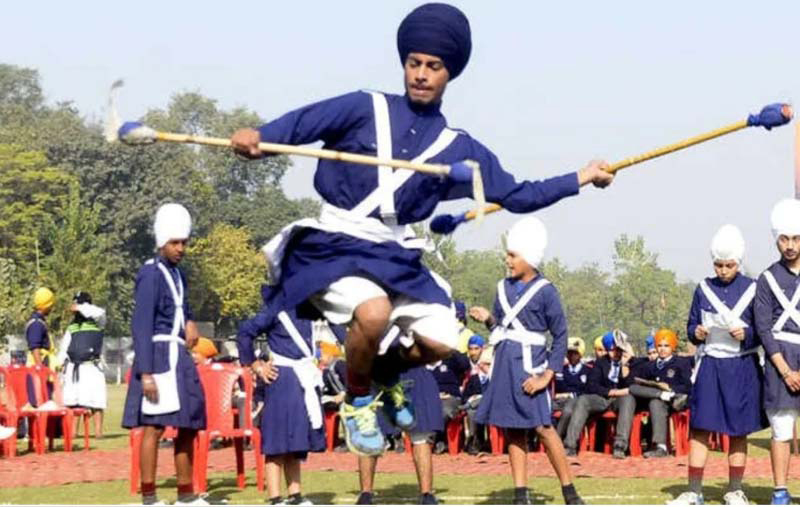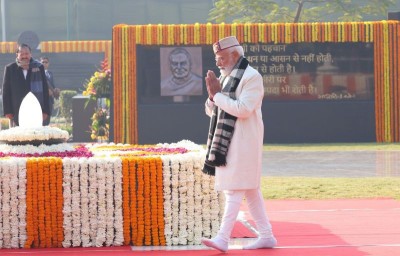 Gatka
Gatka
In the heart of Punjab, where golden fields of wheat stretch under the vast sky, lies a tradition as vibrant and enduring as the land itself: Gatka, the ancient martial art of the Sikhs.
Once practiced primarily in the region’s gurudwaras and open grounds, this unique martial tradition has now transcended borders, captivating martial arts enthusiasts and cultural historians across the globe.
From India to Canada, the UK to the United States, and beyond, Gatka is finding new life and new audiences, far from its original birthplace.
A Glimpse into History
Gatka’s origins are deeply intertwined with the spiritual and martial history of the Sikh faith. The martial art traces its roots to the 16th century, during the time of Guru Nanak Dev Ji, the founder of Sikhism, but it was formalized as a martial discipline under the sixth Sikh Guru, Guru Hargobind Ji.
It flourished particularly under the guidance of Guru Gobind Singh Ji, the tenth Sikh Guru, who is credited with introducing the warrior-saint ethos, encouraging Sikhs to protect the oppressed while upholding spiritual values.
More than a set of combat techniques, Gatka was an embodiment of the Sikh principle of miri-piri, which blends the spiritual with the temporal, the saintly with the martial.
In the historical context, Gatka was used to defend the Sikh community during conflicts with the Mughal Empire and other forces.
Its weapons, such as the kirpan (curved sword), kataar (dagger), and wooden training sticks called soti, were not just tools of war but expressions of the Sikh ideals of justice and protection.
Technique and Philosophy
Gatka is often characterized by its fluid and fast-paced movements, which are as much about grace as they are about power. Practitioners, called Gatkaars, use circular motions and swift footwork to attack and defend in a seamless flow, resembling a dance as much as a battle. The most iconic aspect of Gatka is the use of swords, but other weapons, including staffs, spears, and even whirling chains, are integral to the practice.
One of the core elements of Gatka is the belief in the divine protection and spiritual fortitude of the practitioner. In traditional Akhara (training spaces), Gatkaars begin their practice with prayers, emphasizing that martial skills are not merely physical but rooted in mental discipline and moral clarity. The philosophy behind Gatka remains one of protection, humility, and service, where violence is only employed as a last resort to safeguard the innocent.
The Global Revival
For many years, Gatka was at risk of becoming a lost art, confined to small groups in Punjab or Sikh diaspora communities.
However, the late 20th and early 21st centuries have witnessed a remarkable revival, spurred on by a renewed interest in Sikh heritage and culture.
This resurgence is not just limited to India; Gatka is now taking root in countries across the globe.
Much of Gatka’s global revival can be attributed to Sikh communities in countries like the UK, Canada, and the United States.
Sikh youth, many of whom were born and raised in these countries, began to reconnect with their cultural roots through Gatka.
Festivals, parades, and Sikh religious processions worldwide often feature Gatka demonstrations, drawing the attention of both the diaspora and non-Sikhs alike.
In recent years, Gatka academies and organizations have been established worldwide, offering training and workshops to those interested in learning this ancient art.
These schools not only teach the physical techniques but also impart the spiritual and philosophical values embedded in the practice.
The annual International Gatka Federation championships, held in different countries, have become a platform for showcasing the martial art on a global stage.
Non-Sikhs are also increasingly drawn to Gatka for its unique blend of martial prowess and spiritual discipline. In a world where traditional martial arts like karate, jiu-jitsu, and taekwondo have gained mass popularity, Gatka stands out for its cultural richness and holistic approach. Fitness enthusiasts, history buffs, and spiritual seekers are all finding value in this centuries-old art form.
Bridging Cultures and Generations
One of the most exciting aspects of Gatka’s global journey is its ability to bridge cultural and generational gaps.
For many young Sikhs living in the diaspora, Gatka provides a tangible connection to their heritage. In a rapidly globalizing world, where cultural identities often blend and evolve, Gatka allows these youths to stay rooted in their traditions while proudly sharing their culture with others.
The art form also serves as a powerful reminder of the Sikh community’s commitment to defending the oppressed and standing up for justice.
As Gatka continues to gain attention, more non-Sikhs are becoming aware of the Sikh philosophy of Sarbat da Bhala, the pursuit of well-being for all. In a sense, Gatka is not just a martial art; it is a messenger of peace, unity, and justice.
(Image and text courtesy: Khalsavox.com)
Support Our Journalism
We cannot do without you.. your contribution supports unbiased journalism
IBNS is not driven by any ism- not wokeism, not racism, not skewed secularism, not hyper right-wing or left liberal ideals, nor by any hardline religious beliefs or hyper nationalism. We want to serve you good old objective news, as they are. We do not judge or preach. We let people decide for themselves. We only try to present factual and well-sourced news.







